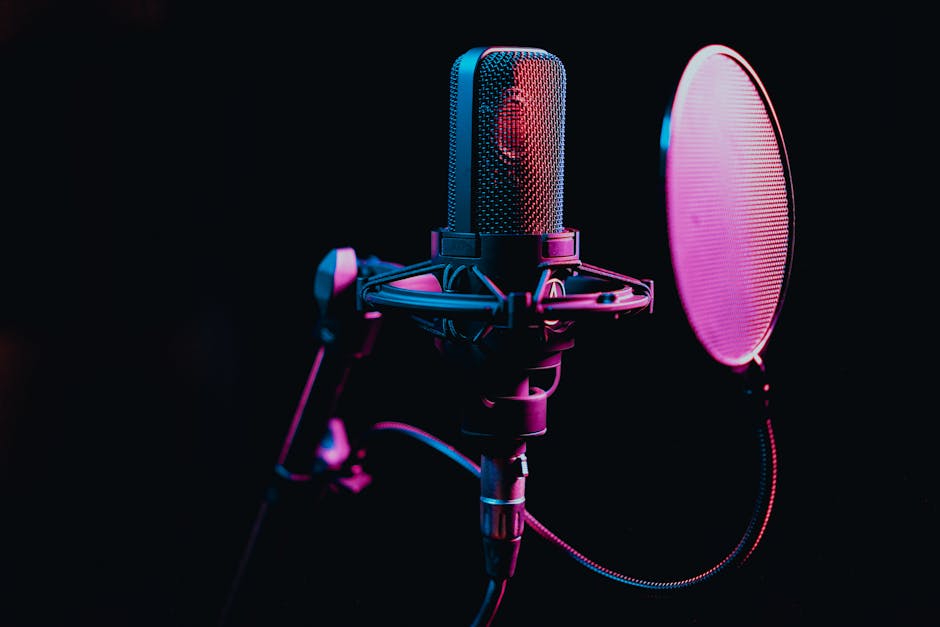How I Use My Podcast Hosting Platform’s Analytics for Insights.
How I Use My Podcast Hosting Platform’s Analytics for Insights
When I first started my podcast, “The Curious Mind,” my biggest thrill was simply seeing an episode go live. Downloads were a bonus, but honestly, I didn’t truly understand what the numbers meant beyond a vanity metric. It wasn’t until I started digging into my podcast hosting platform’s analytics that I realized I was sitting on a goldmine of information, just waiting to be unearthed. This isn’t about simply checking a dashboard; it’s about a systematic approach to understanding my audience, refining my content, and ultimately, growing my show. Let me walk you through my process for turning raw data into genuine, actionable insights.
My First Stop: Unpacking Overall Download Trends and Peaks
The very first thing I look at when I log into my podcast analytics is the overall download trend. This isn’t just about the total number of listens for a given month, but the pattern of those downloads over time. I regularly examine the weekly and monthly graphs to spot any significant spikes or dips. A sudden spike might indicate an episode that resonated exceptionally well, perhaps due to a timely topic, a popular guest, or a successful cross-promotion. Conversely, a dip can be a red flag, prompting me to investigate if there was a technical issue, a change in my release schedule, or a subject that simply didn’t hit the mark.
I pay close attention to the IAB Podcast Measurement Guidelines, which many hosting platforms adhere to, ensuring I’m looking at industry-standard podcast statistics rather than inflated numbers. For instance, I look at unique downloads rather than raw plays, as this gives a more accurate picture of individual listeners. I also track the “day of the week” performance. For “The Curious Mind,” I’ve discovered that Tuesday releases consistently outperform others. This insight has led me to firmly establish Tuesdays as my primary release day, ensuring my content hits listeners when they are most receptive.
Connecting Download Trends to External Factors
Beyond internal factors, I always cross-reference download trends with any external activities. Did I appear as a guest on another podcast? Was my show featured in a newsletter or on social media? Did a major news event occur that might have influenced listening habits? For example, a few months ago, I saw an unexpected surge in downloads for an older episode about space exploration. A quick search revealed that a major astronomical discovery had just been announced, and my episode suddenly became highly relevant. This taught me the value of having evergreen content that can gain traction unexpectedly.
I also track how long my episodes continue to receive downloads after their initial release. Some topics, particularly interviews or deep dives into complex subjects, tend to have a longer tail, accumulating listens weeks and even months later. This helps me understand the longevity of my content and informs my strategy for crafting compelling narratives that stand the test of time.
Decoding Episode Performance: What My Audience Truly Connects With
While overall trends are important, the real granular insights come from individual episode performance. This is where I spend a significant amount of my analytics time, dissecting what makes an episode a hit or a miss. My hosting platform provides detailed statistics for each episode, including total downloads, average listening time, and even points where listeners tend to drop off.

I sort my episodes by total downloads to identify my top performers. Then, I analyze common threads among these popular episodes. Is it the topic? The guest? The format? For instance, I’ve noticed that episodes featuring practical advice or interviews with experts in niche fields consistently perform better than my solo musings. This doesn’t mean I abandon solo episodes entirely, but it certainly guides my content calendar, ensuring a healthy mix of what my audience loves most.
Analyzing Listener Drop-Off Points for Content Refinement
One of the most powerful features my platform offers is the ability to see listener drop-off points within an episode. This is incredibly insightful. If I see a significant percentage of listeners dropping off at the 5-minute mark, I’ll go back and listen to that specific segment. Was my introduction too long? Did I lose their attention with technical jargon? Was there an awkward pause or a sudden shift in topic?
By identifying these patterns, I can make concrete adjustments. For example, I realized that some of my early episodes had lengthy intros that delayed getting to the core content. After seeing consistent drop-offs, I shortened my intros and moved directly into the main discussion. This small change significantly improved my average listening time. This also helps me refine my optimizing episode titles and descriptions, ensuring they accurately reflect the content and set listener expectations correctly.
Mapping My Listeners: Insights from Geographic and Device Data
Understanding who is listening and where they are listening from is invaluable for tailoring my content and promotion. My podcast hosting platform provides detailed demographic data, showing me the geographic distribution of my audience down to countries and, in some cases, even major cities. I can also see what devices my listeners are using.
Knowing my primary audience is concentrated in specific regions helps me consider cultural nuances or local events when discussing certain topics. If I’m planning an episode on a global issue, I might highlight different perspectives relevant to my top listening countries. This also influences my social media promotion schedule, allowing me to post at optimal times for my largest audience segments.
Tailoring Content and Promotion Based on Audience Demographics
Device data, while seemingly minor, also offers useful insights. If a large percentage of my listeners are on mobile devices, it reinforces the need for clear audio quality and easily digestible segments, as they might be listening on the go. If desktop listening is significant, it suggests a more focused, longer-form engagement. I’ve also noticed that certain topics see a higher listenership on smart speakers, indicating a more casual, background listening experience, which influences my choice of content for those segments.
This demographic information also helps me in seeking out potential guests or collaborators. If I see a growing audience in a specific country, I might look for experts or stories from that region to better serve and engage that segment. It’s about being more intentional with my outreach and making sure my content feels relevant to a truly diverse listenership.
Beyond the Initial Play: Tracking Listener Retention and Behavior
Downloads are a great starting point, but true insight comes from understanding listener retention. My hosting platform offers metrics like subscriber growth, completion rates, and how many listeners return for subsequent episodes. These are critical indicators of how well I’m building a loyal listener base.
I regularly compare the number of new listeners to returning listeners. A high number of new listeners is fantastic for growth, but if my returning listener count isn’t growing proportionally, it tells me I might have an issue with converting casual listeners into loyal fans. This could prompt me to re-evaluate my call-to-actions, the consistency of my content quality, or my overall podcast branding.
Interpreting Completion Rates and Subscriber Engagement
Completion rates for individual episodes are another key metric. If an episode has a high download count but a low completion rate, it suggests that while the topic was appealing, the execution might have faltered. This often ties back to the drop-off points I mentioned earlier. Conversely, an episode with a moderate download count but an exceptionally high completion rate tells me that those who did tune in were deeply engaged – a valuable insight for understanding what truly resonates with my core audience.
Subscriber data,




Post Comment